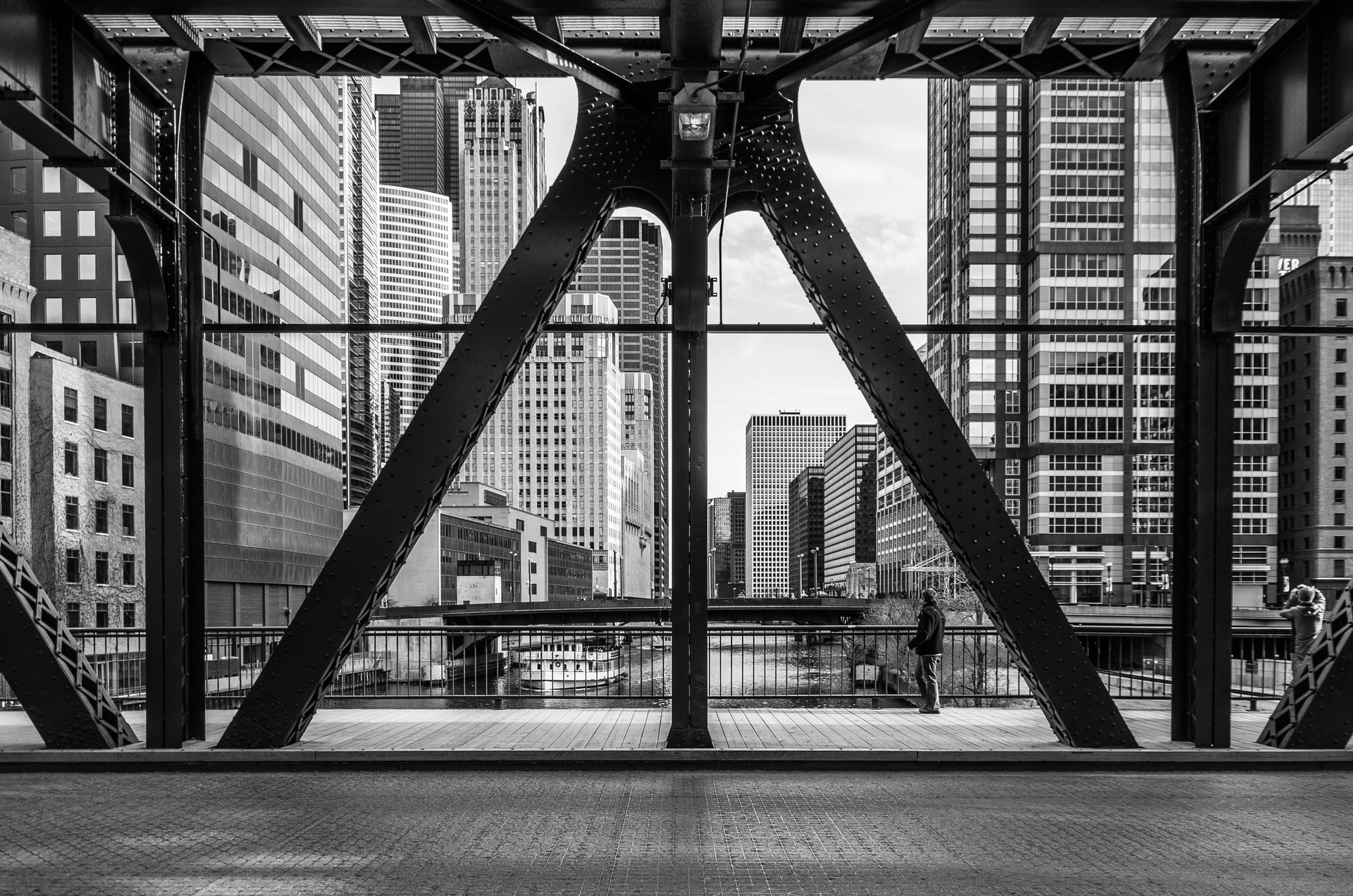If you happen to be craving a latte in Chicago’s Gold Coast Historic District, there are 12 Starbucks to choose from. If your soup recipe calls for carrots and bok choy, you can swing by to pick them up at one of the 39 grocery stores within a mile of the neighborhood’s center. Accidentally hit your thumb with a hammer? Seek medical care at one of Gold Coast’s 28 emergency facilities. There’s reason to believe the care you receive will be excellent – residents in this neighborhood have an average life expectancy of a whopping 90 years.

But take the L just seven stops south to the Garfield Park station and you’ll find yourself in a very different Chicago.
Here in Englewood, where many of the predominantly Black residents live on incomes less than half Chicago’s average, fresh carrots and bok choy can be hard to get your hands on. The solitary Whole Foods closed in 2022, leaving behind a considerably more limited discount grocery, a handful of community markets, and a parade of fast food restaurants as the primary sources of food. Despite having nearly double the population of the Gold Coast, all 24.5k of Englewood’s residents just marked the opening of the neighborhood’s second Starbucks. In 2013, the city closed 6 of Englewood’s public schools, requiring hundreds of local families to commute out of the neighborhood for education. Both police presence and violence run high here, but whether your injury is due to a home improvement accident or an encounter with gun violence, Englewood’s only emergency room has a reputation for overcrowding and care that, out of necessity, is often rushed.

Welcome to Chicago’s Dignity Desert, where the average life expectancy isn’t 90 years. Not even close. It’s just 60.
The Dignity Desert is a term we coined here at Near North Health to explain why it matters so much to us to be close to the people we serve in the neighborhoods that need care the most. Because Chicago’s Dignity Deserts aren’t limited to Englewood, and they’re more complex than the familiar food desert. A Dignity Desert is marked by a community-devastating lack of healthy groceries, clean water, adequate education, and trustworthy healthcare. Families who call these neighborhoods home, some of whom have done so for generations, are left without reliable access to options that would empower them to live, eat, and learn the way they both desire and deserve. Through no fault of their own, our neighbors are robbed of life-sustaining dignity.
The depression that plagues Chicago’s Dignity Deserts is a catch-22 of circular scarcity: lack of resources drives higher-income residents out of the area and discourages growth, and a declining population discourages investment in new resources. There are too many vacancies – of the single-family homes in Englewood, approximately 25 out of 100 are empty – and too little economic stability to open new business. “When one particular area overwhelmingly has low-income projects or buildings,” urban Chicago historian Shermann ‘Dilla’ Thomas told The Click, “and doesn’t have single-family houses and a tax base, then everything else falls. So, I’m not going to build a grocery store or any kind of small business, because there’s no homeowners to support it.”

Chicago’s Dignity Deserts didn’t develop spontaneously.
When the racial housing covenants in Shelley v. Kramer were struck down by the Supreme Court in 1948, a previously thriving Englewood, and neighborhoods like it, became the city’s first victims of redlining and white flight. By the 1970s, many major businesses and institutions closed or relocated, including a towering art deco Sears that was once the city’s first air-conditioned department store, Chicago State University, and, eventually, nearly all of the neighborhoods’ dine-in restaurants.
“Englewood began to see no jobs, no food, disinvestment in the community, and dissipation of school programs,” history professor and Englewood native Jakobi Williams told Block Club Chicago. “The community’s aspirations began to go away.”

When resources are scarce, hope can be hard to find.
Today, community activists, grassroots organizations, and care providers like Near North Health are working hard to restore resources, opportunity, and hope to Chicago’s Dignity Deserts like Englewood. By providing patient-centered, convenient, and reliable healthcare along with access to nutrition education, mental health resources, and fresh food in Chicago’s most underserved communities, NNH is doing everything in our power to close the life-span gap that separates some Chicagoans from their neighbors.

We’re making sure the folks in the Dignity Desert have some dignity restored to them by treating them with the kind of respect every human is due, multiplied by a deep understanding of the systemic challenges they have faced and continue to face. We’re making sure they are seen, heard, and supported with the dignity they deserve. You can learn more about exactly how we do that here.
And we’re not alone. You’ll find a list of some of our favorite Chicago organizations helping fight back against the Dignity Desert at the bottom of this blog.
We believe in a future for Chicago where the Dignity Desert is only a memory. A Chicago where we support, celebrate, and amplify the vibrant culture and creativity alive in these neighborhoods.
A Chicago where everyone, no matter where they live, has access to the best our city has to offer – the necessities, joy, and stability we all need to thrive.
Together, year by year, we hope we can close the life expectancy gap in Chicago and give back to our neighbors the most valuable resource that calling Dignity Desert home has cost them:
30 more precious years to be alive.
